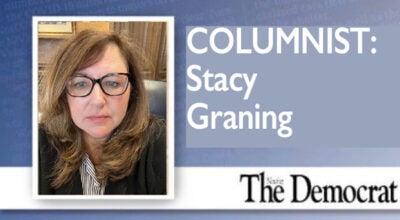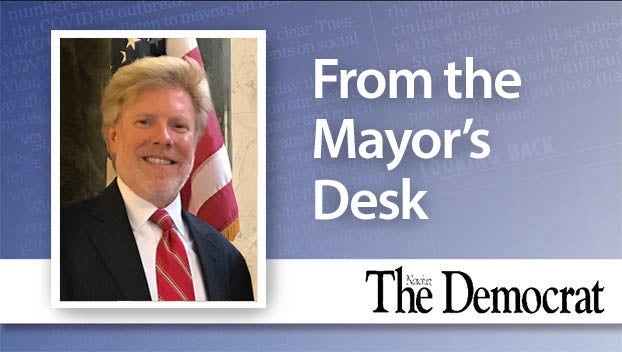Consider dissolving city government
Published 12:01 am Sunday, August 12, 2018
After six years of mayhem, it is no surprise that elected city officials continue to miss the big picture. A learned friend once told me that the only occupation in the world without any training or apprenticeship is politics.
Still, it is genuinely alarming that city elected officials may now be again looking to annex county property into the city, at a time when residents are leaving this crime and tax heavy city in droves — into the county, or, leaving this area altogether, in search of safety, affordable housing, quality education, jobs paying living wages and reasonable property taxes.
After all, if crime and aggressive prosecution of crime is not fixed, nothing else will matter. City officials have tried to ignore the fact that we have street gangs and apparently have not talked to former constituents who have fled from city to county.
Despite local exceptionalism advocates, who have gotten us nowhere, Natchez is hardly unique. All over this country, depopulating cities, towns and villages from the Rust Belt to the Deep South are looking at dissolution and consolidation.
Most of what follows is not my primary research. It is largely the work of Michelle Anderson, asst. professor of law, UC Berkeley. Her article, Dissolving Cities, appears at 121 Yale L.J. 1364 -1446 (2012). It is a well-written and balanced 83-page article that covers all 50 states on a topic that historically gets little attention, because municipal law focuses on incorporation of municipalities and the false notion that all places, once established, will continue to grow over time. Anderson’s article is commended to you to prepare you for talking to your local legislators. It can be recovered at this link: https://www.yalelawjournal.org/article/dissolving-cities
Anderson’s article is too long to summarize in 800 words or less. Anderson concludes that “Dissolution emerges as a way to improve, exclude, cope, and reform . . . [s]ince the year 1995, at least 373 cities have dissolved — more than the number we know to have dissolved in the hundred years before that. Postindustrial cities that have lost huge portions of their revenue and population have begun to give up the aspiration of a full recovery to a vibrant past. Now needing to move beyond land-use planning for the shrinking city, such places are confronting local governance itself . . . we see that for cities that struggle, dissolution may be part of the life cycle of urbanization and the management of decline. It belongs in the toolbox of local government reform.” Id. at 1445. The list of dissolutions includes cities, towns and villages in Alabama, Arkansas, Florida, Georgia, Tennessee, Texas and two in Mississippi, Tillatoba and Newport. Id., Appendix A.
Anderson offers “the language and concept of “shrinking governance” to capture dissolution and other ways that people are currently seeking to ameliorate economic decline, minimize fragmentation among local governments, and decrease state and local taxes by reducing the number, powers, and costs of local governments.” Id. at 1371.
She goes on to note that “receiving counties and townships do have one very powerful protection during dissolution: a dissolving city cannot pass its debt onto the entire county or unincorporated area. Since the late nineteenth century, the Supreme Court has interpreted the Contracts Clause of the U.S. Constitution to protect the rights of a dissolved municipal corporation’s creditors (defined not to include taxpayers).
A state may not dissolve a municipality if the entity’s creditors would be left without “some effective means to collect the debts owed to them. To address this rule, any state with voluntary dissolution laws must statutorily provide that a municipality may dissolve only if plans are made for its obligations. Most often, states statutorily grant the lowest level of government (the county or county subdivision) the power to levy taxes to pay off debts. Postdissolution tax mechanisms (including special taxing districts and new special-purpose service districts) can be used to ensure that contractual obligations are met. Most states with provisions to levy taxes to pay for a dissolved municipality’s indebtedness specify that only territory within the geographical limits of the extinct entity may be taxed to provide funds to pay off the disincorporated city’s liabilities.” Id., at 1381-82. MS law appears to follow the foregoing.
Applying Anderson’s research to Natchez likely points to dissolution of City government, with all local governmental functions taken over by Adams County. This is what long-term area mayors Tony Byrne and Charles Evers each publicly advocate, on the basis that there is simply no justification for a two-layer local government in southwest Mississippi. It is important to note that with city dissolution, no one goes without elected representation, because each resident of Natchez already has a county supervisor in place. In Adams County, we currently have 11 legislative-type local elected official, plus four legislators or 15 elected legislative-type offices for only perhaps 27,000 people. If anything, we are over represented, and we need to downsize.
Paul Benoist is a Natchez resident.





